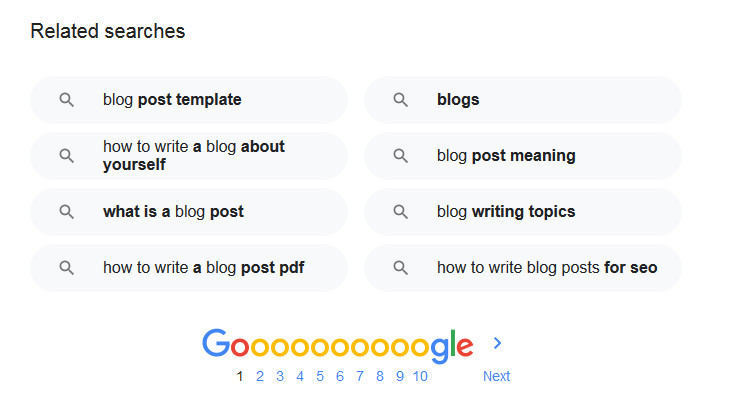Are you just starting out on your blogging journey? Have you read some really great blogs and wondered how to write blog posts yourself? Then you have come to the right place! The first thing to have clear in your mind is:
Table of Contents
Who are you writing for?
Before cracking on with your first blog post, make sure that you know who your prospective audience is. By the time you get to writing your first post, you will already have decided on your niche, but who is your ideal customer?
You will want to be relatable so make sure you get this down before getting started. If you are stuck at this point, go ahead and do some research and come back to your blog post once you know.Check out Neil Patel’s Musketeer Persona Worksheet which will help you with this task.
Attract and keep your readers attention
There are so many blogs out there these days, that to have a chance of someone clicking on yours, it needs to have a captivating headline.
Not only does it need a get your readers attention, you then have to keep it. There are 4 ways you can do this using the formula C.I.A.O. below.
1. Use a Captivating headline as already mentioned
2. Make sure it is Informative. Bearing in mind your audience, what are they desperate to know?
3. Your content will also have to be Accurate. If you don’t know the ‘how to’ of what you are trying to share then find out! That is the wonderful thing about blogging – you learn what you are sharing and will end up as an expert in your niche.
4. An Opinionated post is always much more alive than one that isn’t. People do want to know what you think rather than reading a dry old post with you firmly on the fence! If you don’t have an opinion about the subject, you are unlikely to be excited about it too.

Map out your content
Rather than just plonk yourself down at your computer and start writing, I find the easiest way to go about it is to map out how it is going to flow.
I start with the headline, then write down 5 or so subheadings and give some thought to the content that will go there. If, for example, you are aiming at writing a 1,500 word post, that is only 300 words you have to come up with under each of the subheadings.
This feels infinitely more achievable than writing 1,500 words from scratch! Also, you will be surprised just how quickly you can complete each section.
Your post layout
Another top tip for keeping you readers reading, is to keep your paragraphs short. If you are a master of English, I’m sure you won’t like this, but 2 to 3 lines of text at a time seems to be the optimal amount that people can manage!
It’s also worth considering what it would look like on a mobile phone if you put screeds and screeds of text, so even if it’s not grammatically correct, split up your paragraphs.
Using bullet points is also a useful way of breaking up your page and making important points stand out.
Photographs are also a great way to make you blog more interesting, readable, and indeed to inject a bit of humor where appropriate.
Make sure to interlink your content
If you are writing your first blog post, naturally you won’t be able to link to your own content, but as you build out your site, there will be opportunities with every post to link to something else on your site.
This will keep readers on your site for longer when they click on these links, but it will also show Google that you are offering value above and beyond the particular post that you have just published. Aim to include at least one but ideally two of your own links in each post.
In the interim and, indeed, going forward, do link to the sources of your information. It is all valuable content for your readers.
Whether you link to an external or internal link, make sure they open in a new window so people can get back to the original post quickly and do not leave your site (as would be the case otherwise with an external link).
Optimize for SEO
Having written a wonderful, super-helpful blog post for your intended audience, you need to make sure that they can find it! You do this by making sure you have the right keywords, especially in your heading and meta description (the first 160 characters after your headline).
Check out my post about finding the right keyword if you are stuck. Your headline needs to have maximum 60 characters or the end will be cut off in Google searches. You could also put your keyword in the content but don’t go overboard as it won’t read well and Google don’t like it.
It is, however, perfectly acceptable to put related keywords in your post. The best place to find them is to scroll down to the bottom of the page on Google after you have put in your search term (see the image below).
Last but not least, when you insert images, you will have the option to name them. You should name them with your main keyword as this also helps with Google searches.

Do not….
- Try to be clever by using fancy vocabulary. Make your point as clearly as you can using plain language
- Guess at facts! Make sure anything you are quoting is correct – double check it if needs be, but don’t lose the trust of your readers
- Exaggerate your own success. If you are just starting out, invite your readers on the journey with you. You will most likely be a step ahead of them and they will want to see how things work out for you.
- Publish without checking how it will look. Take a moment to look at a preview, spell and grammar check, and make sure you are happy with the look.
Do…
- Review your latest post on a mobile device as soon as you have published it. I find I spot errors that I missed on my laptop this way and sometimes realize I need to split paragraphs up more.
- Ask readers to comment on your post by ending with a question.
- Learn from every post you create then go back and edit existing posts, especially by adding new, relevant links.
- Include a call to action. If you are writing a blog post, the chances are you are looking to acquire leads or customers so make it clear what they need to do.
Conclusion
Writing posts is a learning process. Like most learning processes, you have to physically do it to learn how to do it! So do read and follow the tips, but be sure to take action and keep taking action.
Follow these guidelines but above all, be yourself and remember that your number one priority is to provide value to the people who find your post.
Have your just written your first post? Or do you remember how you felt after you wrote your first post? If so, I would love to hear about it in the comments.
Just getting started or needing help on your journey? Then check out the training platform that I use to keep me on the right track here.



Hi,
Its so important to search for the correct key words when writing blogs. If you don’t do this, you may never get your content read, which would be a great shame when you have spent so much time And effort into the post you have Published.
Having the correct tools for the job with anything is half the battle and this is even more crucial when working online, as it is quite competitive out there. The key factor here is that you provide value to your readers and help them with any information you have to offer.
Great post and keep up the great work.
Absolutely correct! The key (no pun intended!) is to keep looking for those keywords even when you are not getting traffic as is always the case with a new blog. You will get traffic and will get ranked if you don’t give up.